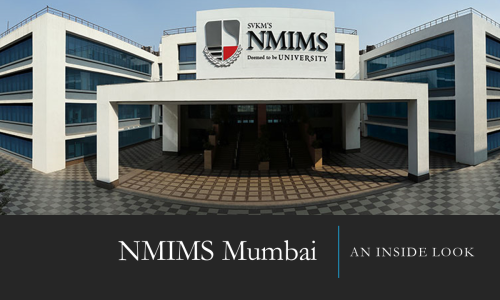When in college, you’ve got enough on your plate. There’s the constant struggle to balance schoolwork and social life. For some, a part-time job is also an added challenge. To say that college life is hard is an understatement. Making a resume shouldn’t be an added hurdle to all that.
Writing your resume without having any work experience yet is no easy task. But, when you curate it to highlight the skills or areas you are best at, your chances of getting hired increase.
Whether you’re looking for a part-time job while studying, applying for internships, or preparing your credentials for future job opportunities, generating a resume will be a significant first step to show your skills and abilities to the professional world. Do this with the right help.
Here, we tackled the easy steps to write an ideal resume for a college undergrad. It is laden with writing tips, tricks, and guides to help you make your own version of a perfect resume.

Picking a College Resume Template
When crafting a resume, looks do matter. Your resume’s design is the first thing that the hiring managers look at, so it must be appealing and leave a great impression.
There are many things to consider when designing your resume, but here are five of them:
Font Style:
When building a resume, fonts play two central roles: it enhances the design and makes the content readable.
How you work with font faces helps in generating a well-designed resume. Bold fonts against simple ones will create hierarchy, and in turn, create emphasis.
Functionality-wise, choosing a simple font is the best way to make the content readable. If a recruiter asks you to provide a printed copy of your resume, use serif fonts. Serif fonts have stroke details at the end of their letters that guide the reader’s eyes from one word to another. The most common serif fonts to use are Times New Roman or Georgia.
However, if your college resume needs to be submitted through the company’s application website or via email, it’s best to use sans-serif fonts, like Arial or Verdana. People generally consider these fonts more legible on screen than serif fonts.
Design Theme:
Create a feel or vibe that you want to communicate to the hiring team. When your future bosses look at your resume, they must get a glance at your personality just by looking at the resume’s design.
Do this by using your favorite color or picking minimalist accents in the design. After choosing a layout that speaks volumes about you, stick to it to maintain design consistency in your resume.
Paragraph and Section Spacing:
Like fonts, white spaces also help make a college resume look gentle to the reader’s eyes.
Your resume’s margin sizes matter depending on the organization that you want to apply to. The creative field is more flexible and allows the applicants to design their resumes the way they want. However, industries like the accounting or legal field are more formal, requiring as little design as possible.
Nevertheless, the standard margin size should be one inch, while the spaces between each line should be between half an inch to one.
ATS Optimization:
Most companies today use an Application Tracking System or ATS to screen their applicants. They input specific keywords or phrases in the system related to the available position. After this, a bot will choose the resumes that contain these keywords and submit them to HR for review.
Recruiters and hiring managers don’t actually allow a bot to make the hiring decisions for them — they only let the bots streamline the process. But before that, they double-check the rejected resumes to make sure the ATS made the right choice.
Nonetheless, it is still safe to optimize your resume according to the information on the job listing that the company posted. We’ll talk about this in detail below.
One-Page Layout:
Resumes should be concise. Most HRs recommend entry-level candidates, like college undergraduates, to keep their resumes to one page only.
Submitting an over one-page resume may also put off recruiters from reading further. On average, recruiters take at least 30 seconds to browse through your resume. They go through many application tools every day, and a long resume may doze them off. Hence, the more compact it is, the easier it is for a hiring officer to evaluate your application.
How to Write an Undergraduate College Resume
When you are new to the job hunting scene, it may be challenging to look for a part-time gig or stand out as an aspiring candidate for a job after graduation.
The easiest way to be the best candidate is to tailor your resume according to your skills and experiences. Below is a list of information that your resume must have. They will help you choose the best and most relevant input that suits company requirements and makes you the most suitable candidate.
The Right Format:
We all have different academic or work experiences. Others worked their way through college with jobs on the side, while some focused on graduating with flying colors.
Wherever you may belong in the spectrum, it’s best to choose the best resume format that matches your own work experience.
- A chronological resume format details your work history in order of when you held each position. It is in reverse-chronological order, with the latest job listed at the top of the section. Choose this format if you had part-time jobs before and know that they will enhance your resume.
- A functional resume format centers on your career-related skills rather than your work history. This format will benefit the ones that stopped school and resumed years later because it will cover the employment gaps and will interest your recruiters with your skills gained throughout your career journey. Use this template when applying for college internships or entry-level positions.
- As the term suggests, a combination resume format is a mix of chronological resume format and functional resume format. It distributes each skill and experience evenly so that it demonstrates relevant skills and documents your work history at the same time. This resume format will also be perfect for college internship applications or those that shifted career paths.
In general, a chronological resume format focuses on your work history and career achievements, while a functional resume format highlights your skills. Since you have little to no experience yet, the functional resume format will offer the best design for a recent graduate.
Your Contact Information:
Contact information is crucial in any resume. It allows companies to reach you should they want to invite you for an interview.
Your contact information should include your name, phone number, and email. Adding a professional account like LinkedIn ID would also be best to keep them in the loop on your academic achievements. If you still haven’t made an account, now is the best time to create one.
Whether you’ve successfully impressed the recruiter or not, they are most likely to keep your contact information. Often, HR personnel saves them in case a job that fits their qualifications comes up.
Your Career Summary or Career Objective:
A career summary or career objective is like an elevator pitch about your overall professional trajectory. It gives your future bosses a glimpse of your expertise.
If you worked part-time jobs throughout college, your career experience must be already significantly loaded. Thus, a career summary will be beneficial for you. It helps showcase a college student’s career goals.
Meanwhile, a career objective is ideal if you lack career experience but have important stories to tell about your impressive background, academic achievements, and skills. They are usually brief statements that start from your experiences and achievements then shift to the company’s needs.
The trick to acing your career summary or objective is this: write it after you’re through with all other sections. This way, you can be sure that you summarized the skills and achievements you want to demonstrate accurately.
Your Skills:
When listing your skills, use powerful words that describe your competency. It should be compelling and comprehensively detailed. Be sure also to give a balance between your hard skills and soft skills.
Although your key terms are powerful, they should also be relevant to the company’s qualifications. If recruiters are looking for a computer-literate candidate, list your knowledge of Microsoft or Adobe Photoshop in the skills section. Or, if they want a candidate that can sell a product well, list your communication skills in it.
Your Responsibilities and Academic Achievements:
Put the spotlight on your responsibilities and academic achievements to impress the recruitment committee. Think of this section as your awards on paper. Demonstrate your organizational skills when you recount a time when you spearheaded a seminar for a school project. Or, tell about your leadership skills by listing your position in a school organization.
When writing your academic achievements or events that you helped organize, use practical and standard terms to catch the reader’s attention and fit in the applicant tracking system. Ensure also that you will write them in action verbs. Words like provided, managed and increased communicate a sense of action. Follow these additional notes to ace this section:
- For seminars, write the event’s title, date, and describe what it is about;
- For achievements, record the award’s name, date, organization, and specific title. (Did you win first place? Is being a participant a great accomplishment already? Say it in detail); and
- List them in reverse chronological order, starting with the latest responsibilities and achievements working backward.
Additionally, avoid starting your phrases with “I” or, better yet, erase them altogether. And, whenever possible, quantify your achievements. For example, if you had an experience being a part-time employee at a fast-food restaurant, you might want to say: “Managed $5,000.00 daily…” or “Increased daily sales by up to 40%…”. Don’t just tell, but show them numbers so they’ll get an idea of how effective you are.
Your Educational Background:
When writing your educational background, write only the latest information. Work with the most recent down to the oldest but still relevant detail. Include your degree program, the university you graduated from, and the date you graduated. Adding your GPA and special awards also help.
Meanwhile, it is unnecessary to include your high school or elementary schools. However, if your past schools are globally famous, it may be helpful to point them out.
If you’re an undergraduate looking for a part-time job, work with your current degree program, university name, and date you started college (format should be: [Starting year] – Present). You can also include special awards that you think would be helpful to boost your credentials.
Industry Buzzwords:
Industry buzzwords are key phrases or words related to the industry or brand you want to work for.
Regardless of your resume’s purpose and whether the company uses ATS, it’s always necessary to use industry buzzwords. Listing industry buzzwords gives the hiring team an idea that you know what you’re doing and will fit in the company. It’s also an excellent way to have an ATS-friendly resume aside from using specific key terms used on the job posting.
Don’t Forget: Proofread
It goes without saying — proofread your resume for possible grammatical or spelling errors. A foolproof resume will reflect on you and your professionalism, so be sure to proofread everything.
Moreover, when your college resume is full of misspelled words or grammatical errors, it may not pass the applicant tracking system test.
Final Touches
Be sure to declare accurate skills and achievements about you. You don’t want to display inaccurate information to impress the hiring team. Doing this doesn’t only reflect poorly on your work values; it may also harm your chances of getting hired if you’re caught.
Finally, enjoy the process. Writing a resume can only be hard if you allow it to be. Good luck with the application! You’ll nail it for sure.
Posts You May Like to Read:




